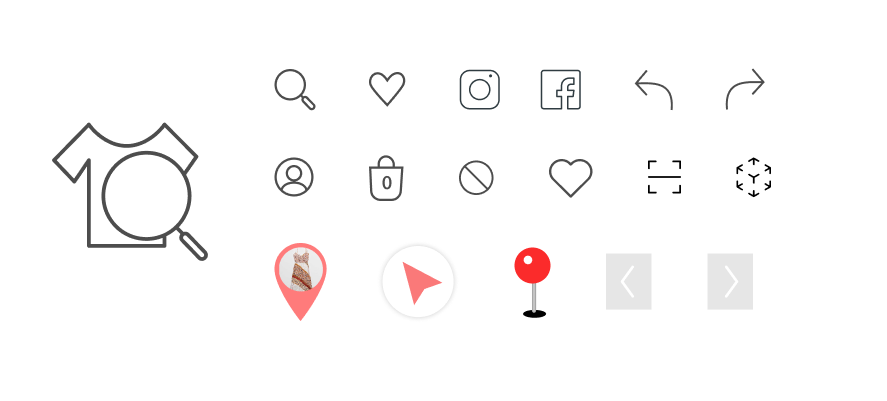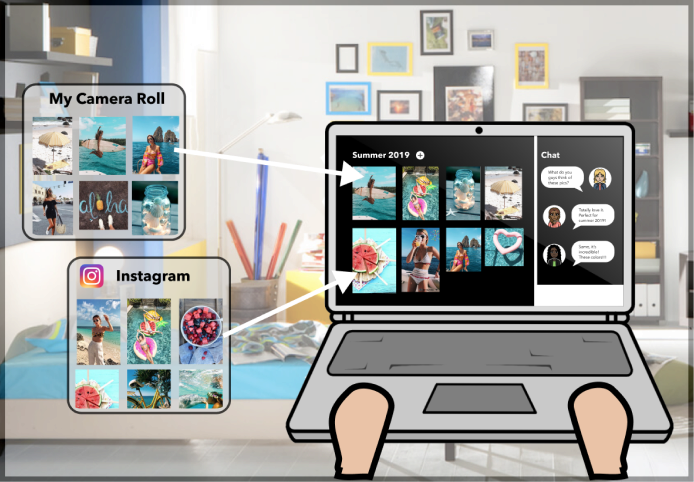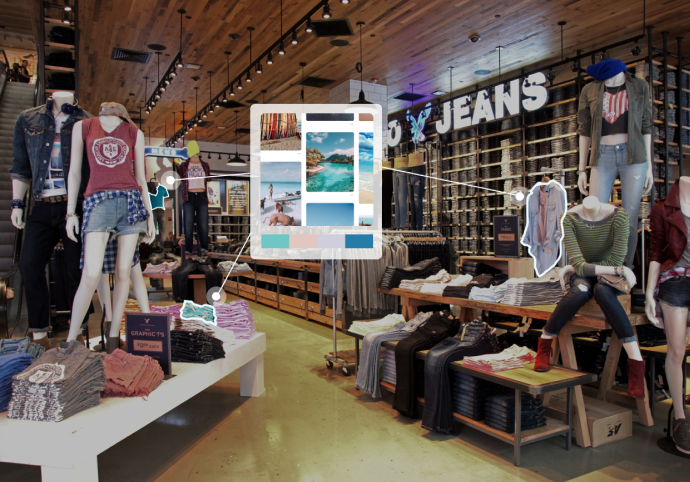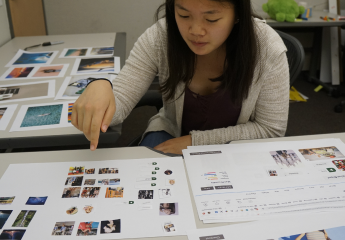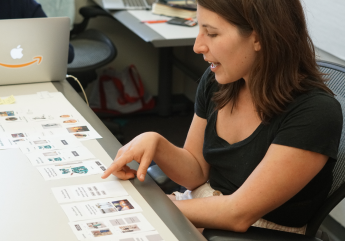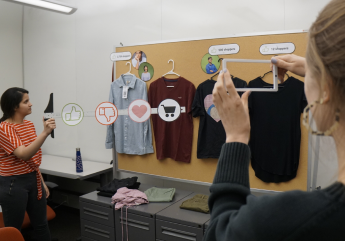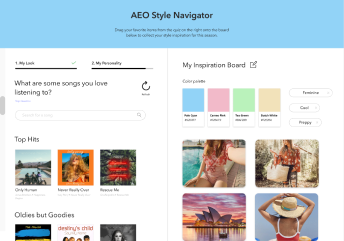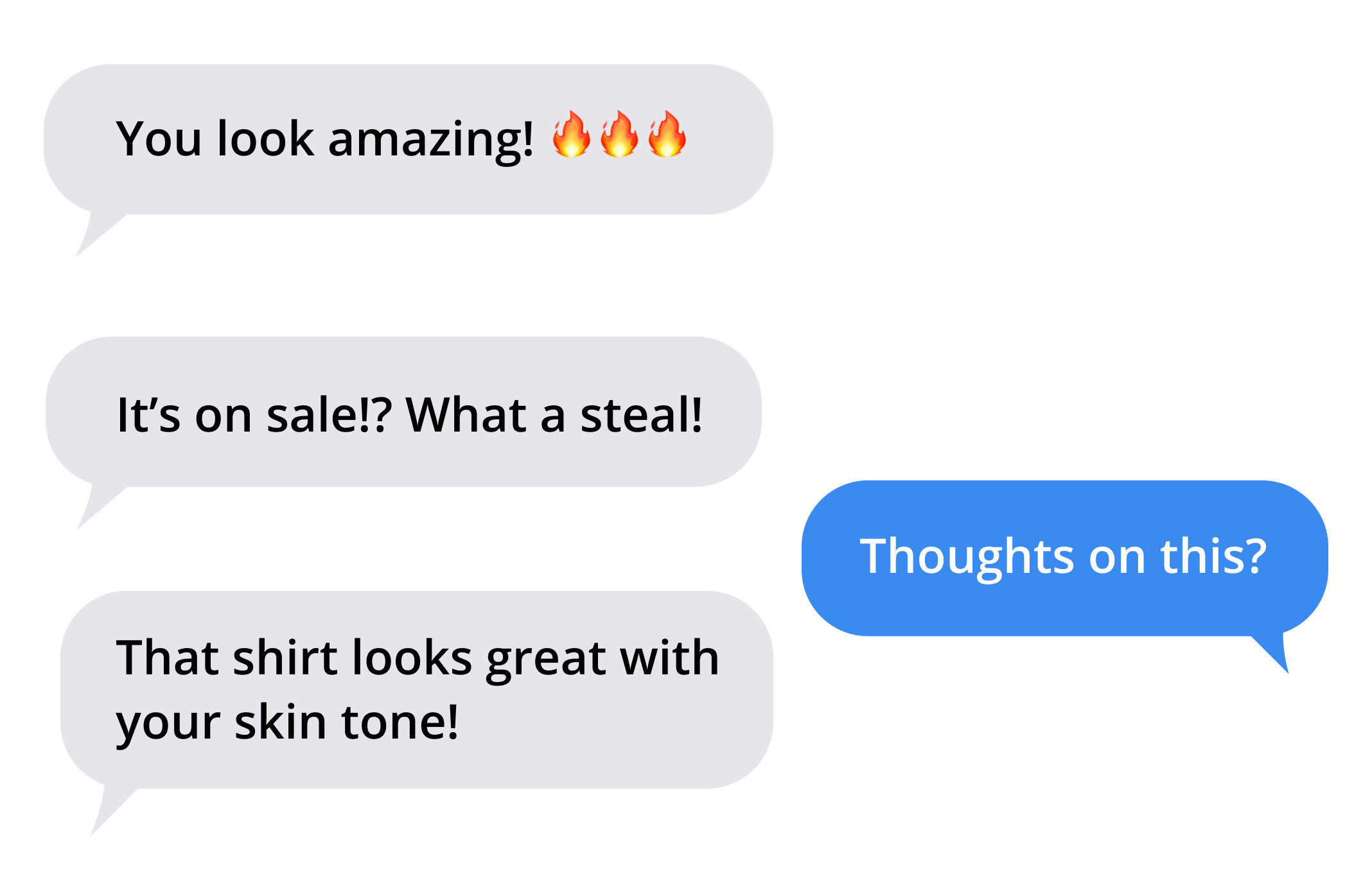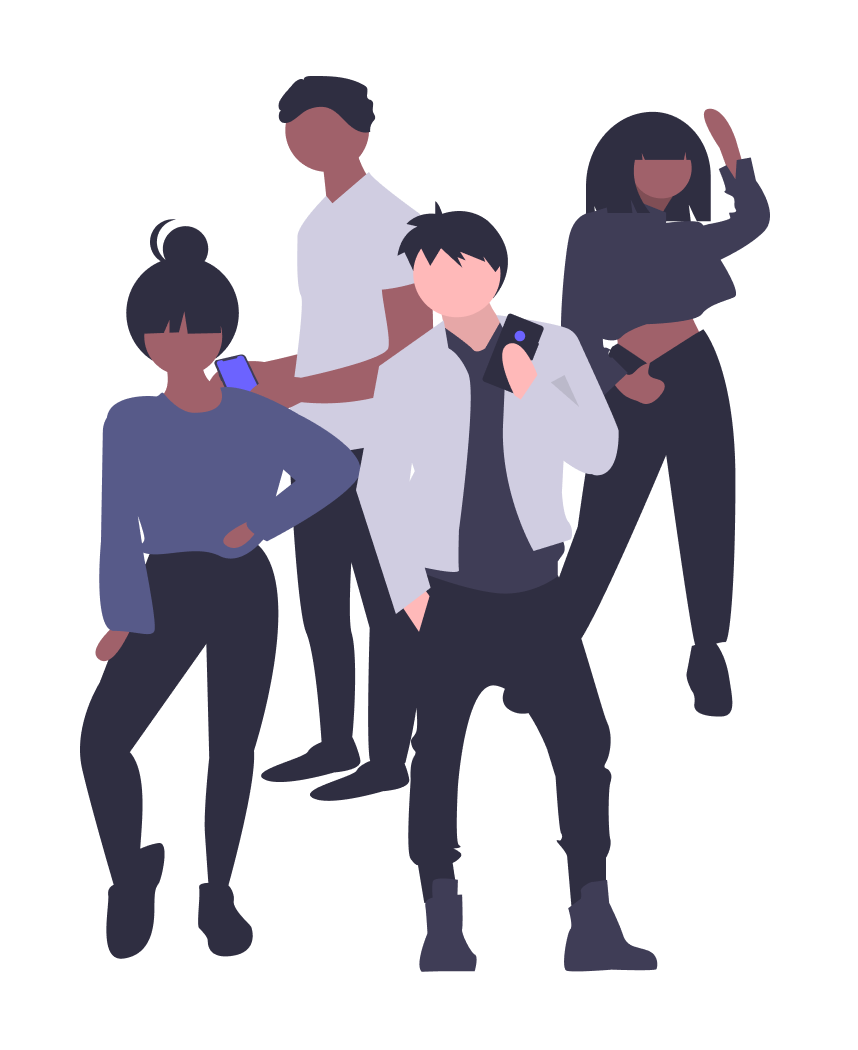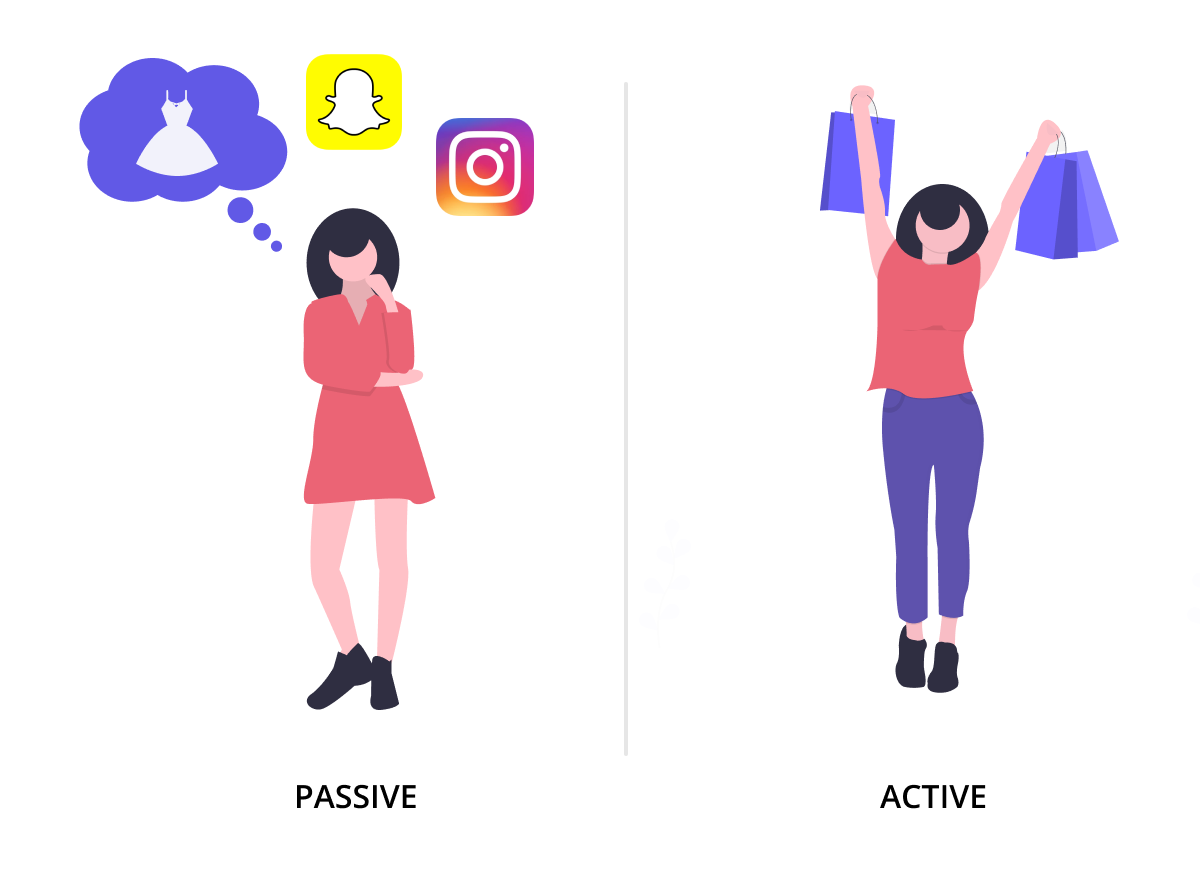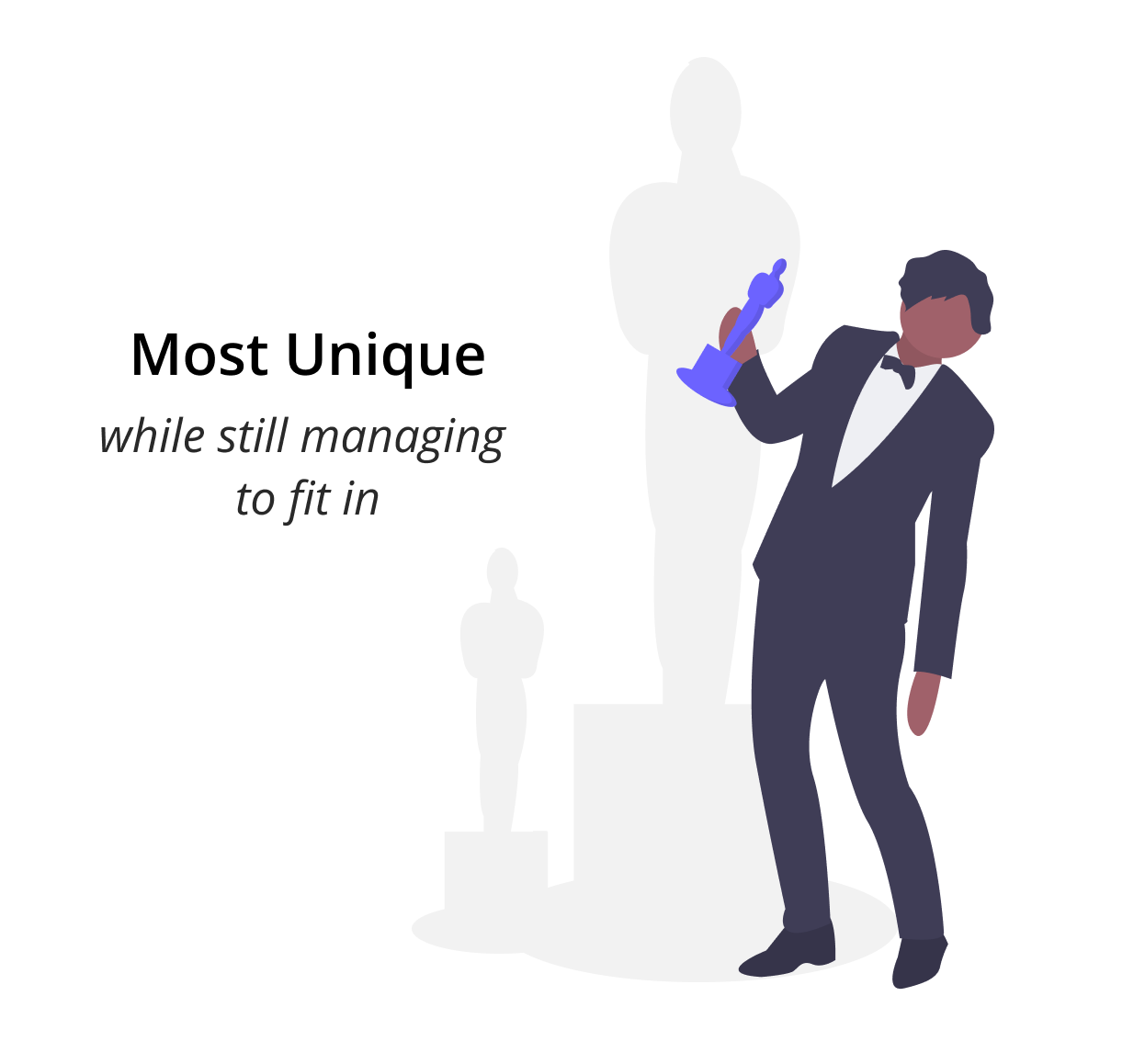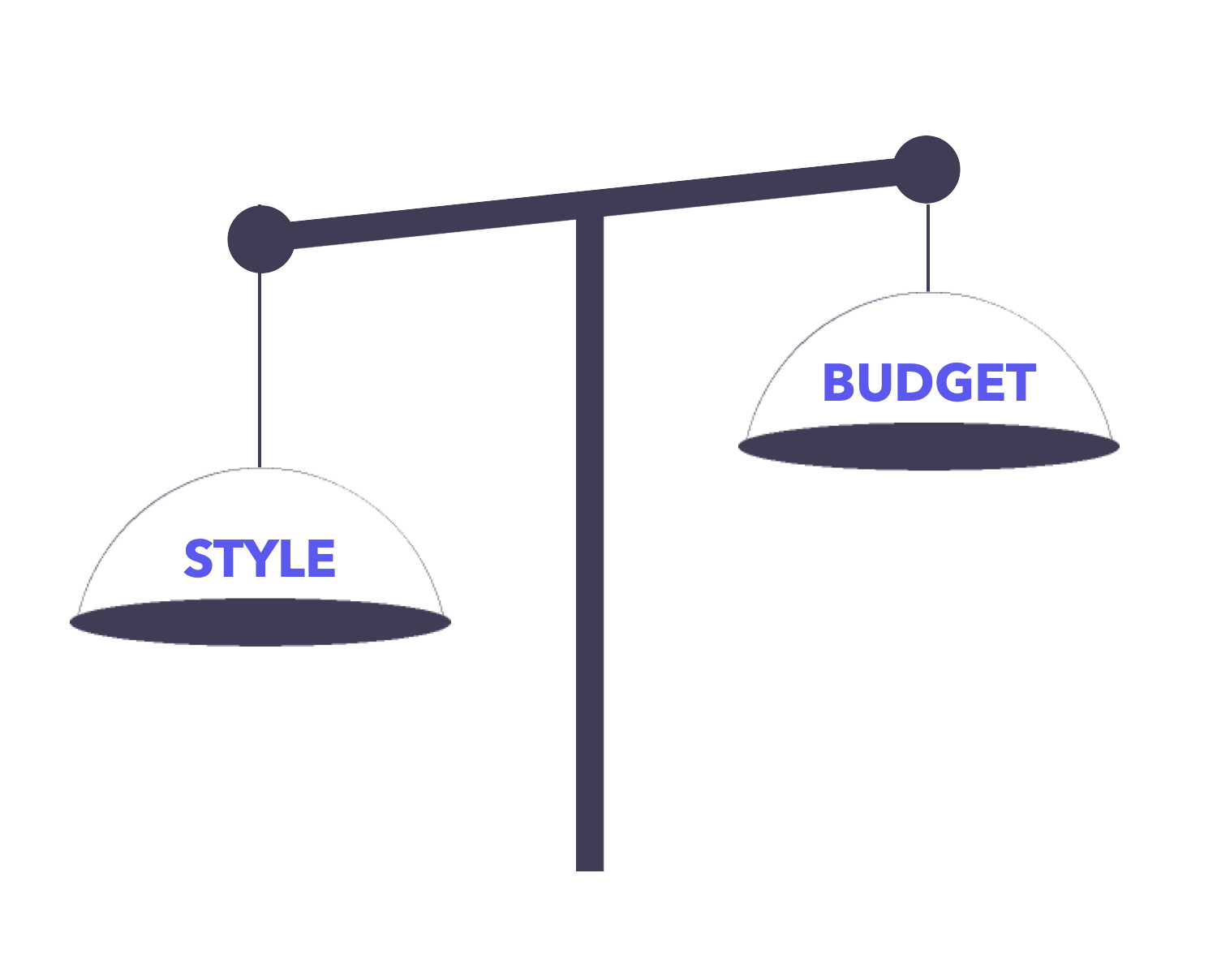STORYBOARDING AND SPEED DATING
With 35+ concepts, we sought to understand which ideas resonated most with users and why. What was the underlying need?
We tested several socialization-based solutions. Some ideas were more plausible, whereas others sought to elicit a reaction from users. Users' feelings towards our ideas would help us better understand why and how users like to socialize when shopping.
EARLY ITERATIONS
Once we defined the scope of our solution, we set to determine which features provided the greatest value to users.
Our early iterations shaped the features that we included in our final product, and helped us fail fast and iterate efficiently. We observed how our solution would impact users' shopping behaviors and focused on making our AR component more natural.
MOVING FROM LO-FI TO HI-FI
Higher fidelity designs helped us test the interactive elements of our prototype to ensure it was intuitive, natural, and engaging for users.
Paper prototypes helped us test overall concepts, rather than polished design details. After deciding the right features to build, we created high-fidelity designs to test usability with our end-to-end, omni-channel solution.
FINAL DESIGN DETAILS
Colors
We used a gender-neutral balance of warm and cool colors to match AEO/Aerie’s aesthetic, while still giving our solution a distinct appearance.
Iconography
Our FindMyStyle icon in particular matches the design of other AEO icons and provides a clear indication of our service.
